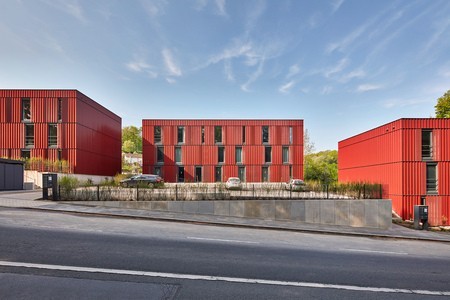BSolutions: Certified passive and BREEAM
Last modified by the author on 21/03/2016 - 10:04
New Construction
- Building Type : Office building < 28m
- Construction Year : 2011
- Delivery year : 2013
- Address 1 - street : 5032 ISNES - GEMBLOUX, Belgique
- Climate zone : [Cbc] Mild, dry winter, warm and wet summer.
- Net Floor Area : 1 113 m2
- Construction/refurbishment cost : 1 922 000 €
- Number of Work station : 80 Work station
- Cost/m2 : 1726.86 €/m2
Certifications :
-
Primary energy need
6.4 kWhep/m2.an
(Calculation method : )
The BSolutions building is a certified "Passive Building" building on 3 levels in the heart of the Créalys science park in Isnes (Gembloux). It is the fruit of the complementarity of the offices of Architects and Studies BSolutions which occupy the building that they designed. It is currently being certified BREEAM, which is the methodology for assessing the environmental performance of the most widespread buildings in the world.
It is a technological showcase NZEB (Nearly Zero Energy Building) of the know-how of BSolutions.
Watch the video of BSolutions, international winner of the Sustainable Construction Grand Prize of the Green Solutions Awards 2017:
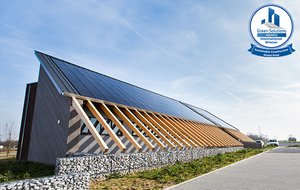
Building users opinion
For 3 years of occupation of the premises, it is a feeling of comfort and well being of the occupants.
If you had to do it again?
Certain technical aspects of construction can always be better anticipated such as for example the air tightness.
See more details about this project
https://www.construction21.org/belgique/articles/be/laureat-grand-prix-construction-durable-des-green-solutions-awards-2017-bsolutions-belgique.htmlData reliability
3rd part certified
Stakeholders
Construction company
Cobelba
Levert Sébastien, Gestionnaire de chantier, 081 40 14 21
http://www.cobelba.be/Home.aspxConstruction of the building
Contracting method
General Contractor
Owner approach of sustainability
Certified passive building. No use of fossil energy. Nearly Zero Energy Building: very high energy performance whose energy required to be covered from renewable sources on site.
Architectural description
The first architectural gesture is a building that snuggles in and interacts with the sun. The building is first of all an intention of compactness. Therefore, the activities are divided into three levels. It is then to partially bury itself, which constitutes a first natural thermal insulation and especially the exploitation of a natural thermal inertia. Adaptation to the place and the context These principles are translated by the articulation of 2 volumes: the first, mineral, oriented full North so as to have, throughout the year, a light as constant as possible avoiding the overheating of local. and the other, organic, oriented along the constructible boundary (South-South-West) with a roof inclined at 35 °. This architectural and technical gesture gives its identity to the building. This roof slope is the cover of integrated photovoltaic panels (optimal orientation to 35 °). This roof is a strong architectural identifier of the building. It is visible from the E42 motorway and the national highway. The building appears in the extension of the ground in which it anchors. In order to reduce unwanted solar energy in the South-oriented rooms, the side facades and the extended roof serve as sunscreens. Structural elements in glued laminated timber are extended to create a natural shade, reinforcing the first architectural gesture. A walkway penetrates the entrance and leads the visitors, users and RMP to the building. Inside the building, the traffic is simple, legible and easy thanks to a buffer zone serving all three levels. This "sas" zone is also a buffer in the passive role of the building. As for the interior layout of the office areas: The non-parallel façades (N and SSO) have generated a central area that represents the circulation path and a sharing space composed of glass offices known as "bubbles": zones of interactions, meetings and work. This transparency within the landscape trays along each facade offers acoustically insulated areas while maintaining a luminous permeability. It was the design of the workspaces (sizing of the offices and storage) which induced the modulation and the implantation of the sails bearing and pierglass in facades. It is the architectural design that defines the structural constructive principles.
Voir ci dessusEnergy consumption
- 6,40 kWhep/m2.an
- 60,00 kWhep/m2.an
- 34,50 kWhef/m2.an
Real final energy consumption
42,00 kWhef/m2.an
42,00 kWhef/m2.an
2 015
Envelope performance
- 0,30 W.m-2.K-1
- 0,60
Systems
- Heat pump
- Other hot water system
- Reversible heat pump
- Double flow heat exchanger
- Solar photovoltaic
- 60,00 %
Smart Building
Urban environment
- 5 100,00 m2
- 10,00 %
Product
Heliometer
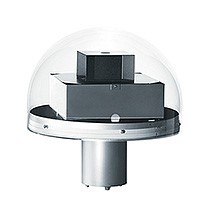
ZUMTOBEL
ZG Lighting Benelux Rijksweg 47 Industriezone Puurs Nr. 442 2870 Puurs Tel: +32 3 860 93 93
http://www.zumtobel.com/be-fr/contact.html#BETable 'c21_germany.innov_category' doesn't exist SELECT one.innov_category AS current,two.innov_category AS parentFROM innov_category AS oneINNER JOIN innov_category AS two ON one.parent_id = two.idWHERE one.state=1AND one.id = '17'
The heliometer is positioned above the roof of the building and manages the luminaires according to the contribution of natural light. The heliometer is a device equipped with a multitude of photosensitive cells allowing to announce according to different algorithms the entry of light throughout the building. This device is connected to a computer that manages all the lighting according to the given programming. Depending on the stroke of the sun, programming automatically lowers the blinds of the windows on the south side. This prevents glare from computer screens and prevents overheating of the building. This means that artificial lighting (lighting) is in addition to the contribution of natural light, on the basis of a chosen luminous intensity. Example, an office should have 500lux (light intensity), natural light gives us 400lux, the fixture will be dimmed to bring the difference, here 100lux. This allows us to save at least 50%.
The heliometer automatically lowers the blinds but the system can be forced if the timer is not fast enough by the occupants. Since the system is automatic and manually forced, the system is easily accepted.
GTC - Centralized Technical Management
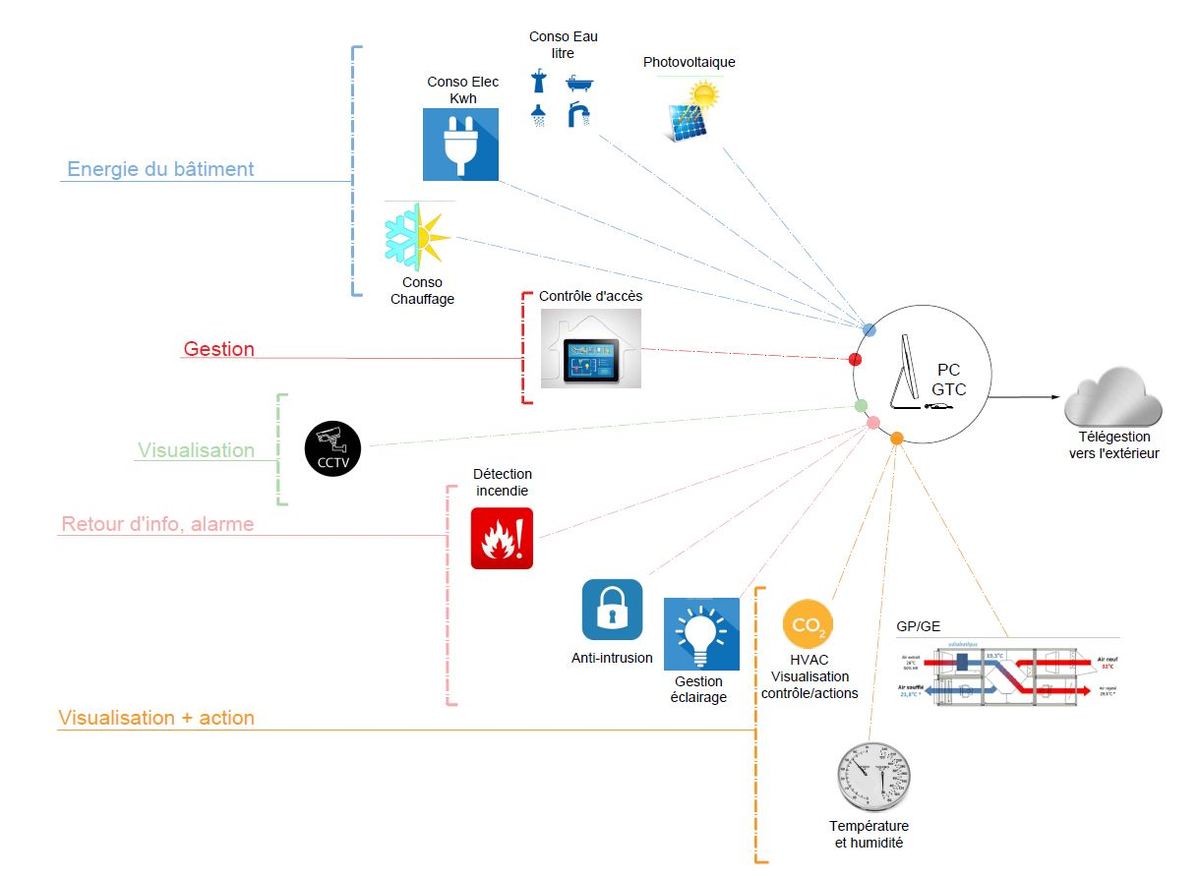
DINEC International
30 rue de la gare 1420 Braine-l'Alleud Téléphone : +32 2 389 16 40 [email protected]
http://www.dinec.beTable 'c21_germany.innov_category' doesn't exist SELECT one.innov_category AS current,two.innov_category AS parentFROM innov_category AS oneINNER JOIN innov_category AS two ON one.parent_id = two.idWHERE one.state=1AND one.id = '3'
The GTC allows to merge the different techniques (fire, intrusion, access control, lighting) in order to visualize the whole on a supervision screen, and to communicate interactions between these techniques. The GTC allows to monitor the building and generates energy savings thanks to multiple programming described below. Here, for example, what can be found there as interactions: the control of the gray sockets, the value of the electrical meters of each panel, the value of the green meters of the photovoltaic panels of each installation, the state of the anti-intrusion , control of lighting in the event of intrusion, control of the color outlets (see below), ... Thanks to the information of the various meters, we have a view on our consumption, production, .... We combine them in order to produce a global consumption information. To this management is connected a touch screen allowing to find all this information, and commands, ... (placed at the main entrance of the building). This console also serves as a link to access control of the entrance door (biometric reader (fingerprint because building without keys), badge and code). We also have management on some electrical outlets, which is why you find red, orange, green and, in some places, gray outlets. For offices, red plugs, are provided only for PCs (laps), 24 hours a day. The orange jacks are for screens and laptop, office hours (alarm off). Green plugs are sockets used, for example, for a GSM charger, a wall lamp on the desk, ... devices that can be switched off after office hours. These orange and green plugs are turned off after the alarm is activated, this avoids waste of energy. Access control: To enter our building, we have a door with electric strike, and it is through a biometric reader (also badge and code keypad) that we will release this waste.
The GTC generates an ease of use of the building. This intelligent management generates energy savings but changes the behavior of the users: more key to the building, more codes to start the alarm, real-time monitoring, ...
Construction and exploitation costs
- 1 800,00 €
- 100 000,00 €
- 245 000 €
- 2 376 000 €
- 133 000 €
Energy bill
- 1 000,00 €
Water management
- 50,00 m3
- 70,00 m3
Indoor Air quality
Comfort
GHG emissions
- 4,15 KgCO2/m2/an
- 100,00 an(s)




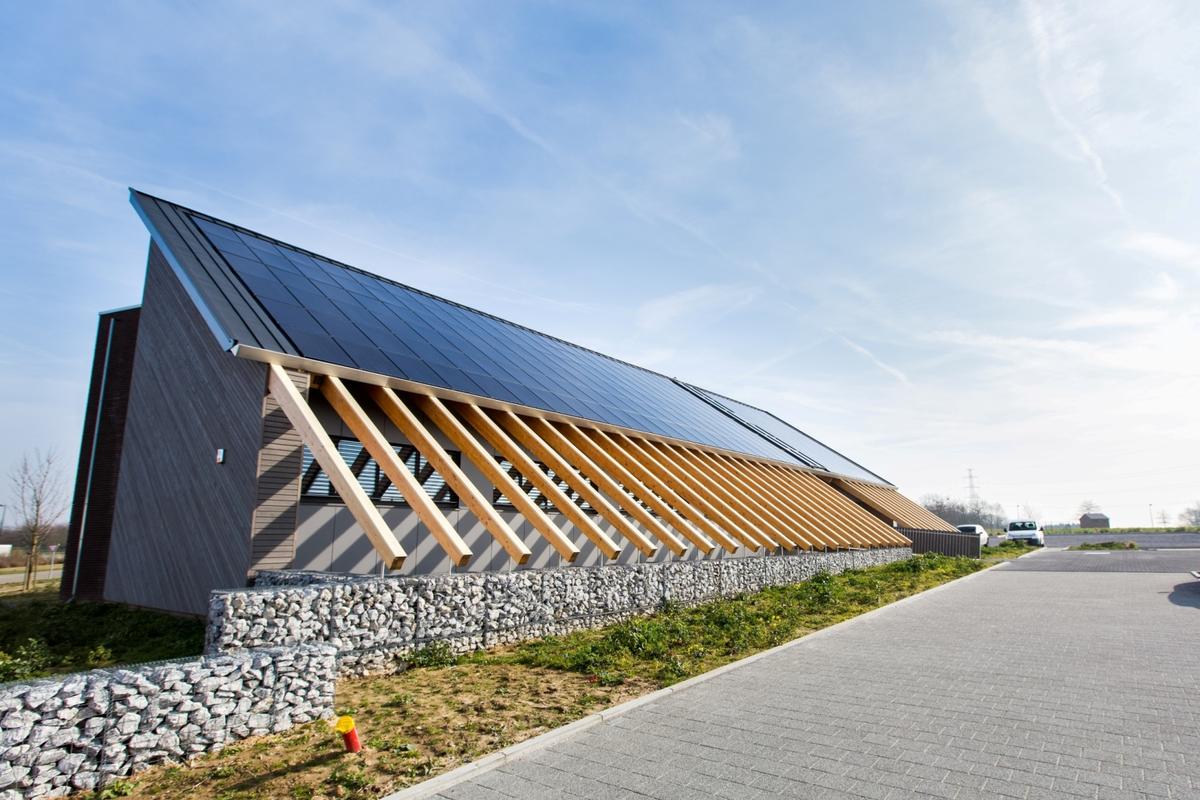

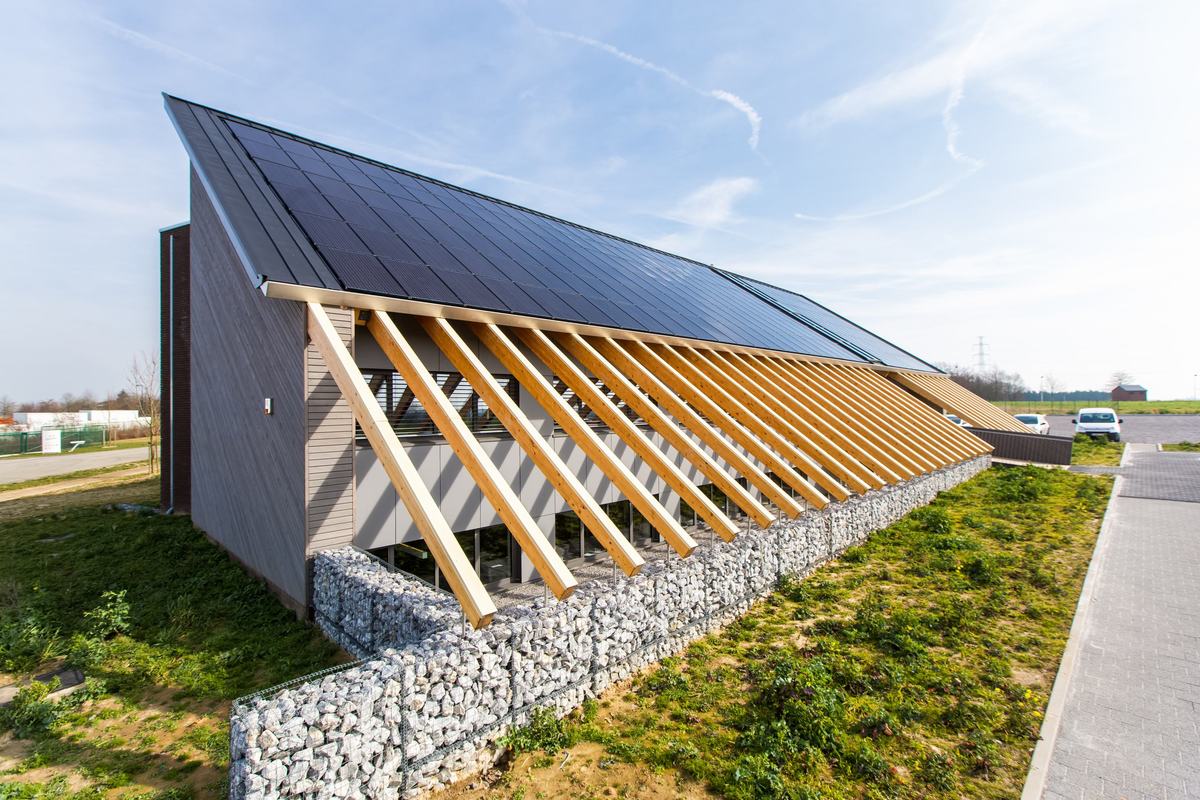
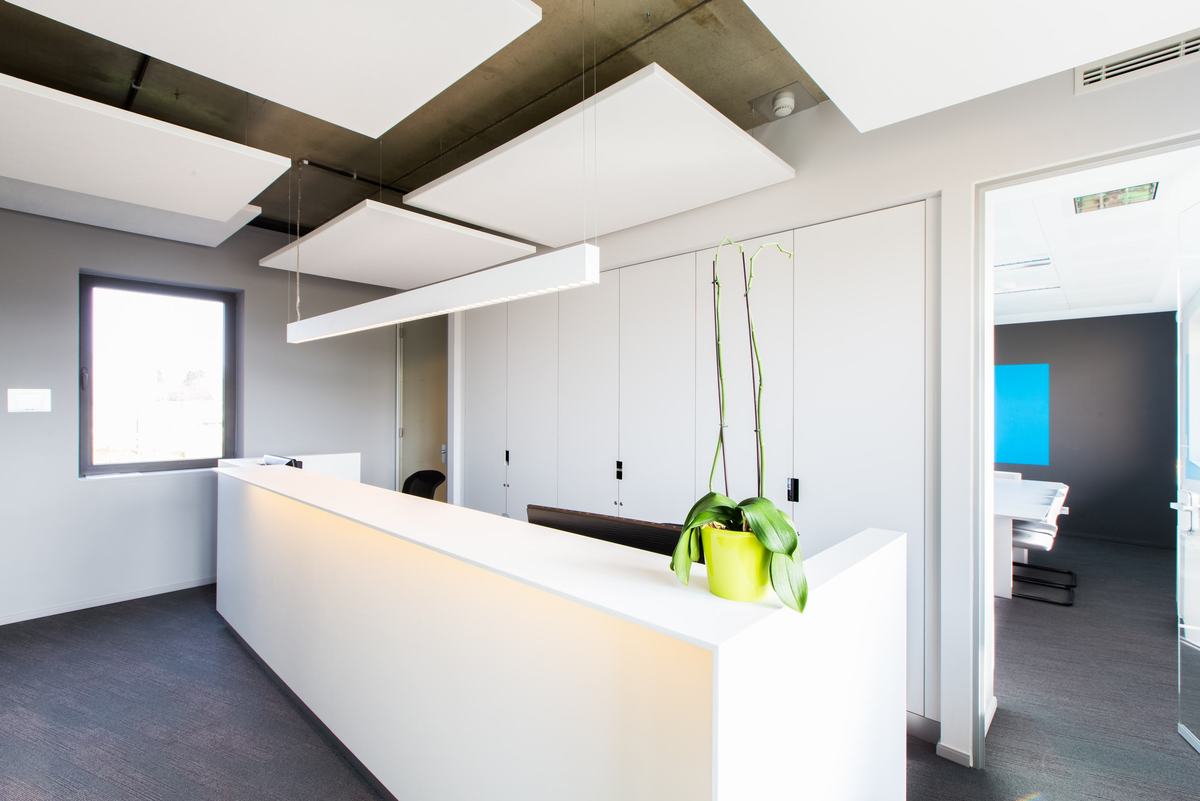
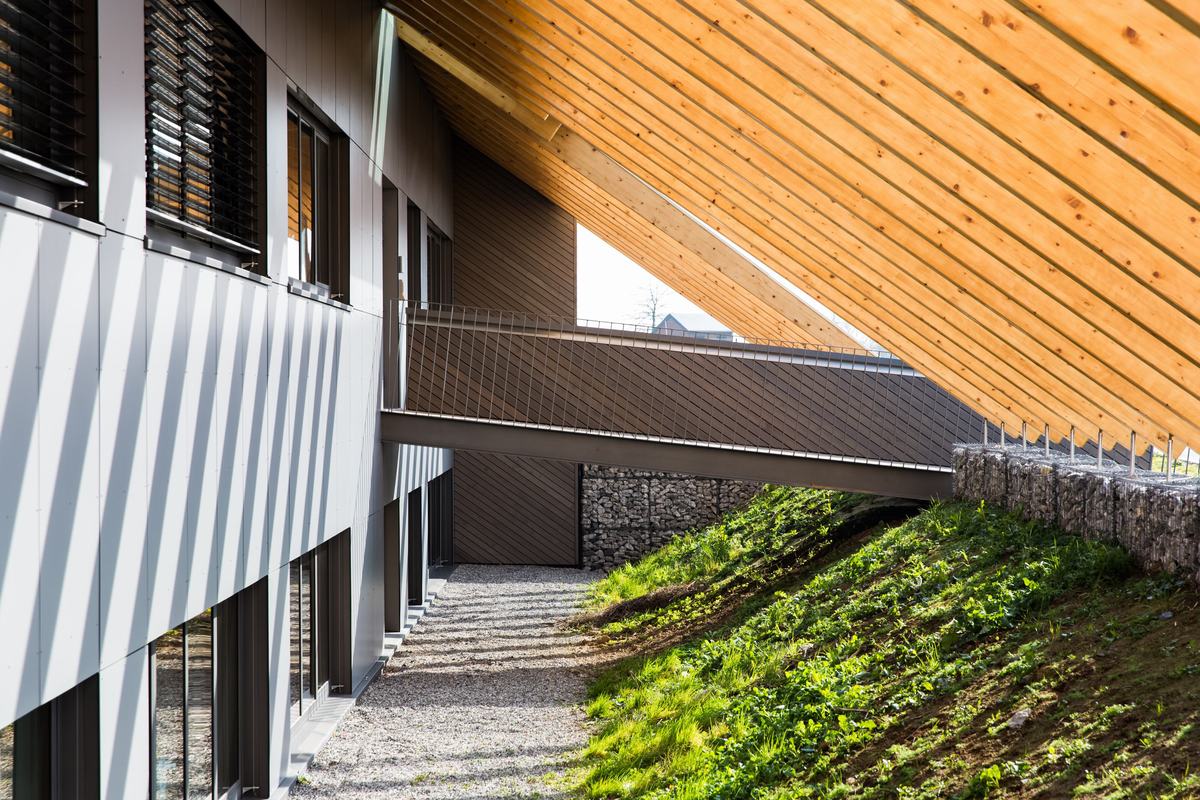

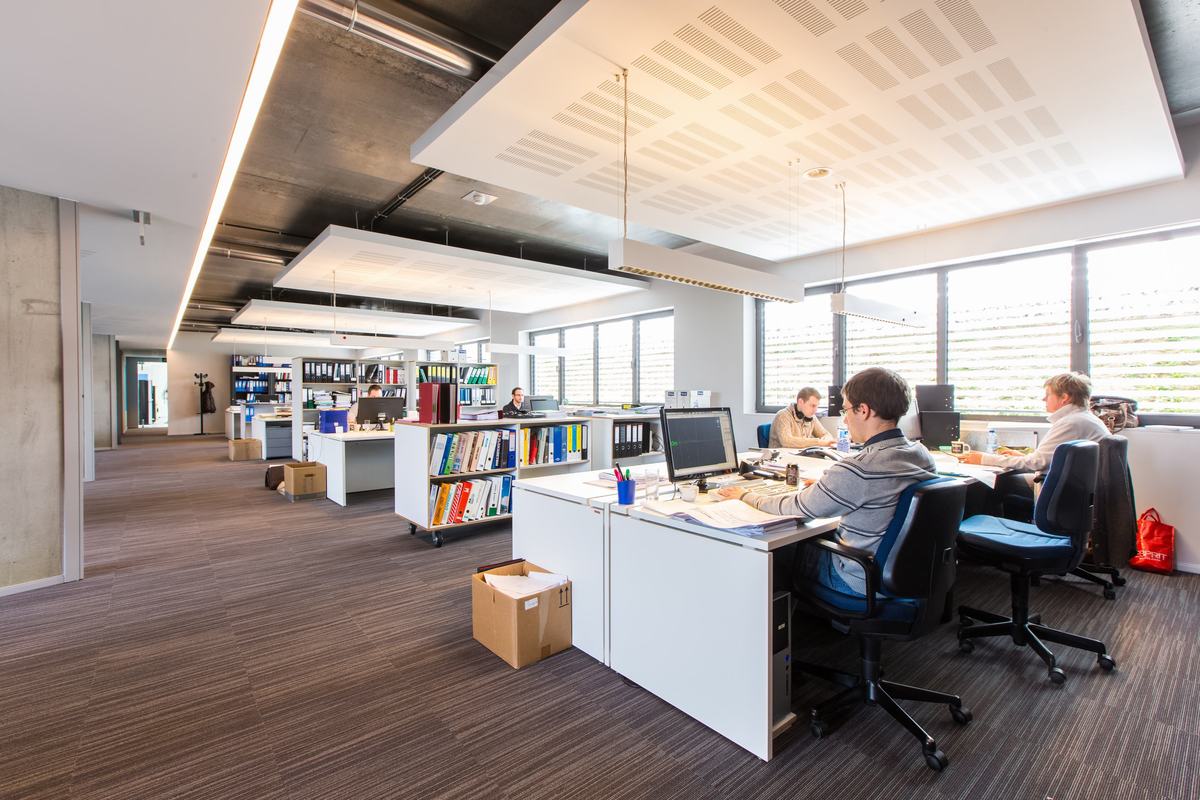

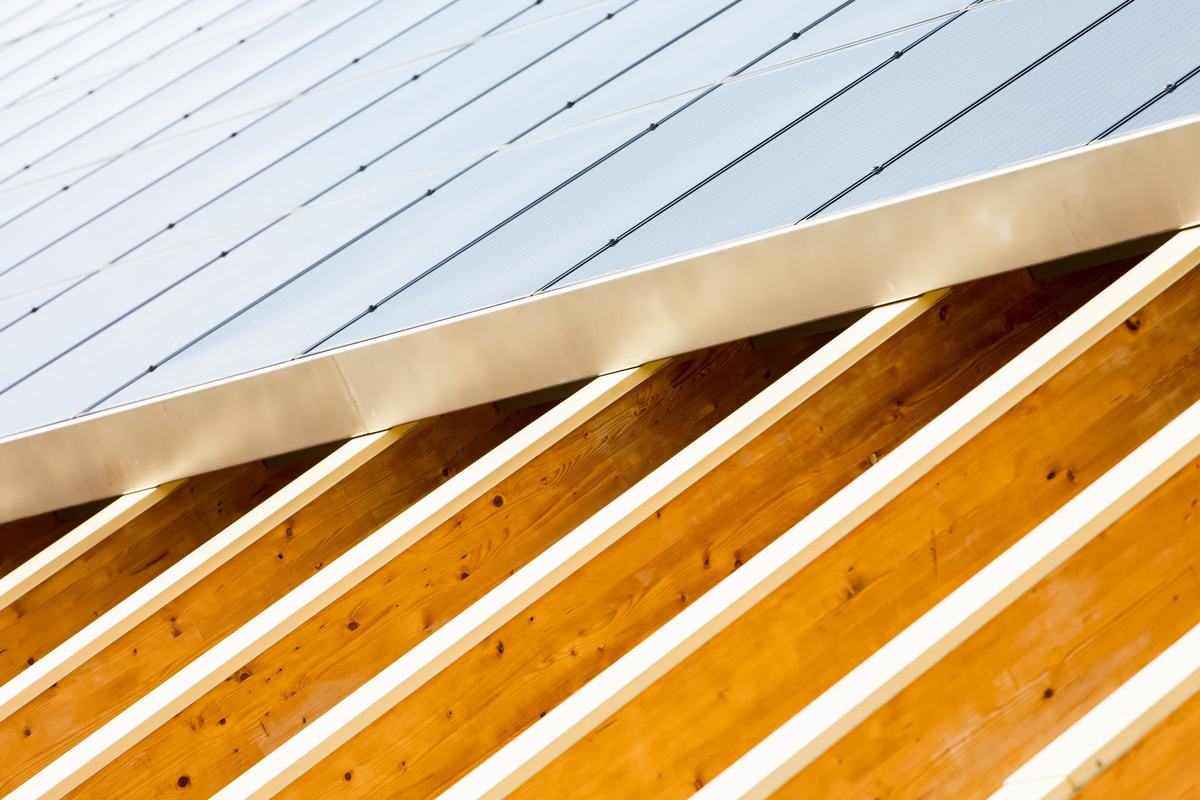
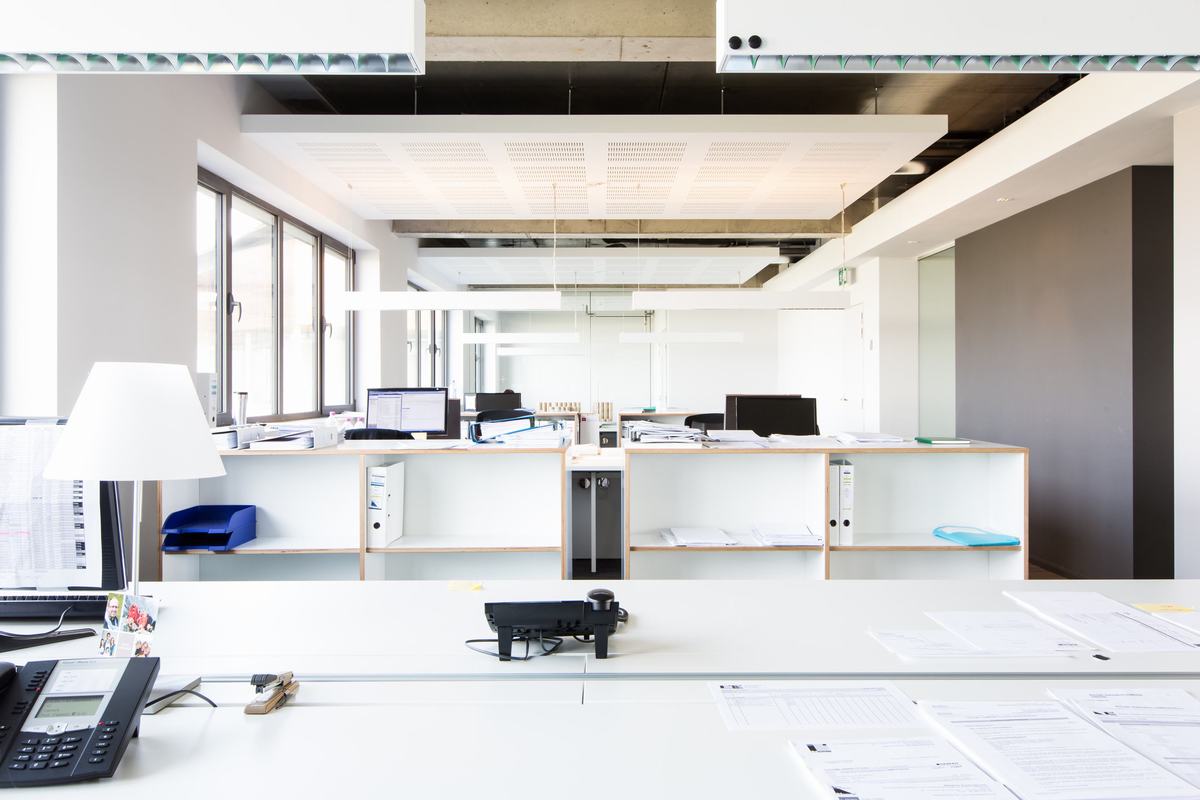

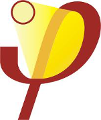
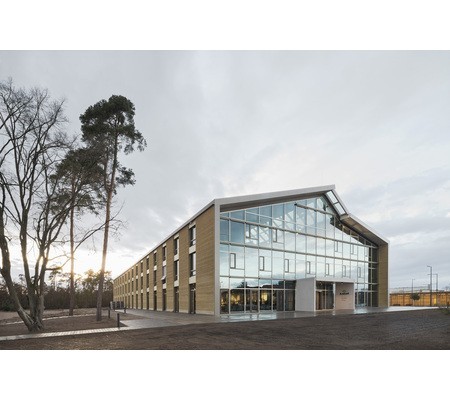
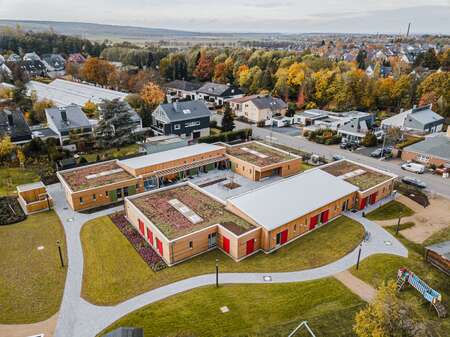
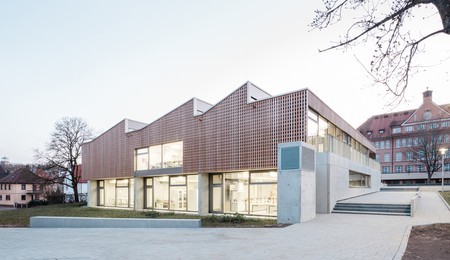
![Lister Dreieck [EN]](https://www.construction21.org/deutschland/data/sources/users/1282/.thumbs/20210325144314-rh2716-0082.jpg)
![AUDI Brand Experience Center [EN]](https://www.construction21.org/deutschland/data/sources/users/1281/.thumbs/20210324141015-atc-iv-aussen-ost-v1-2-0201.jpg)
